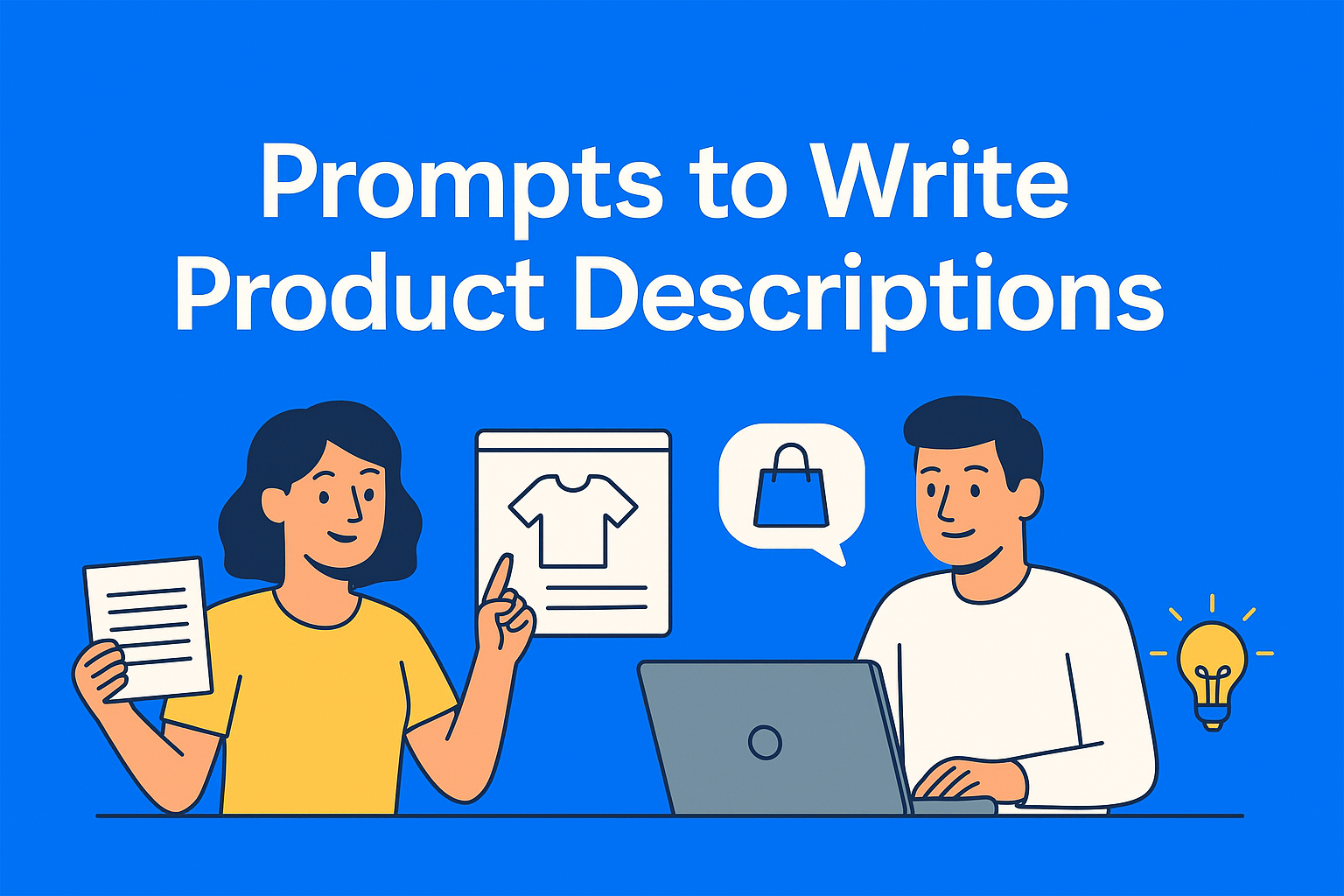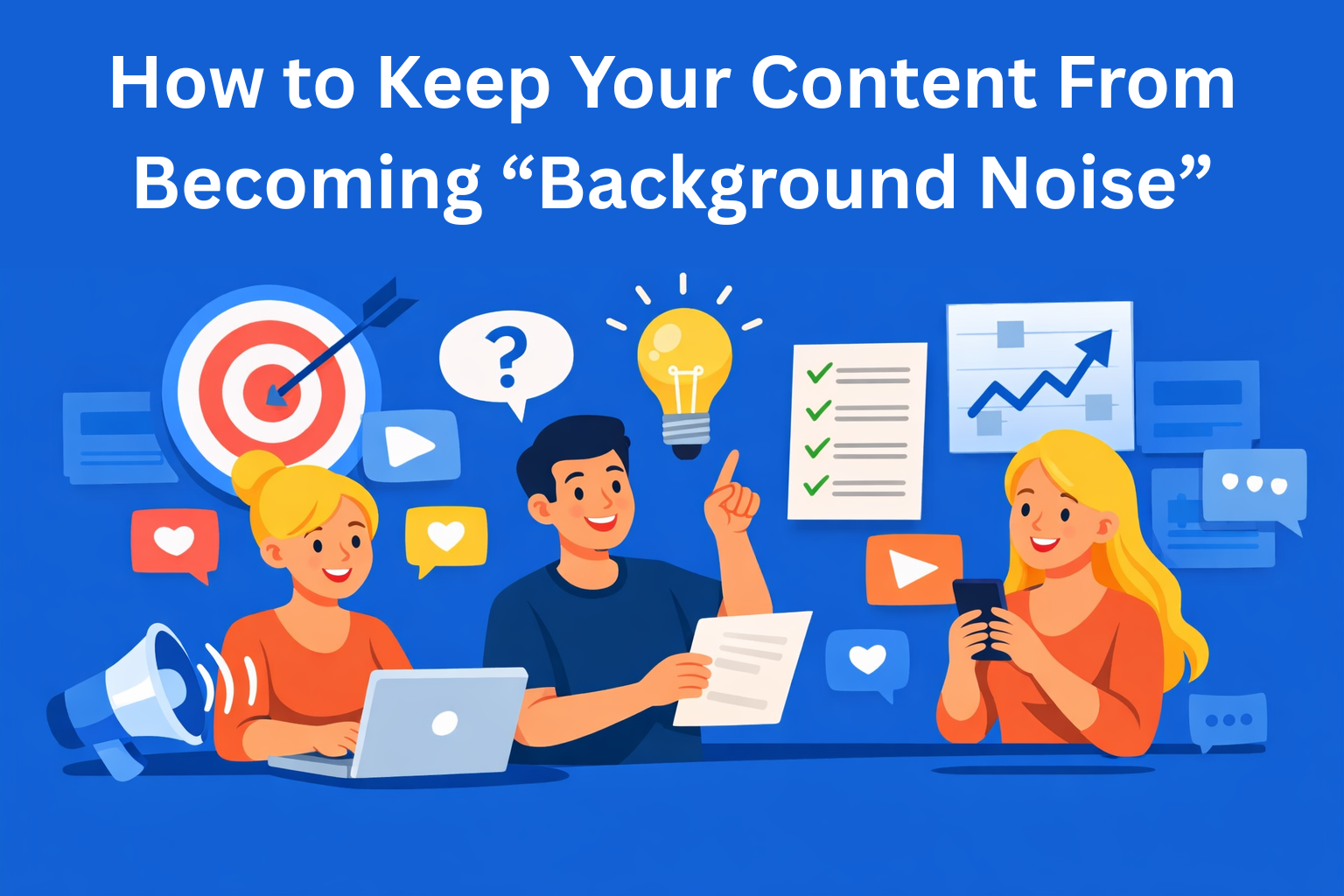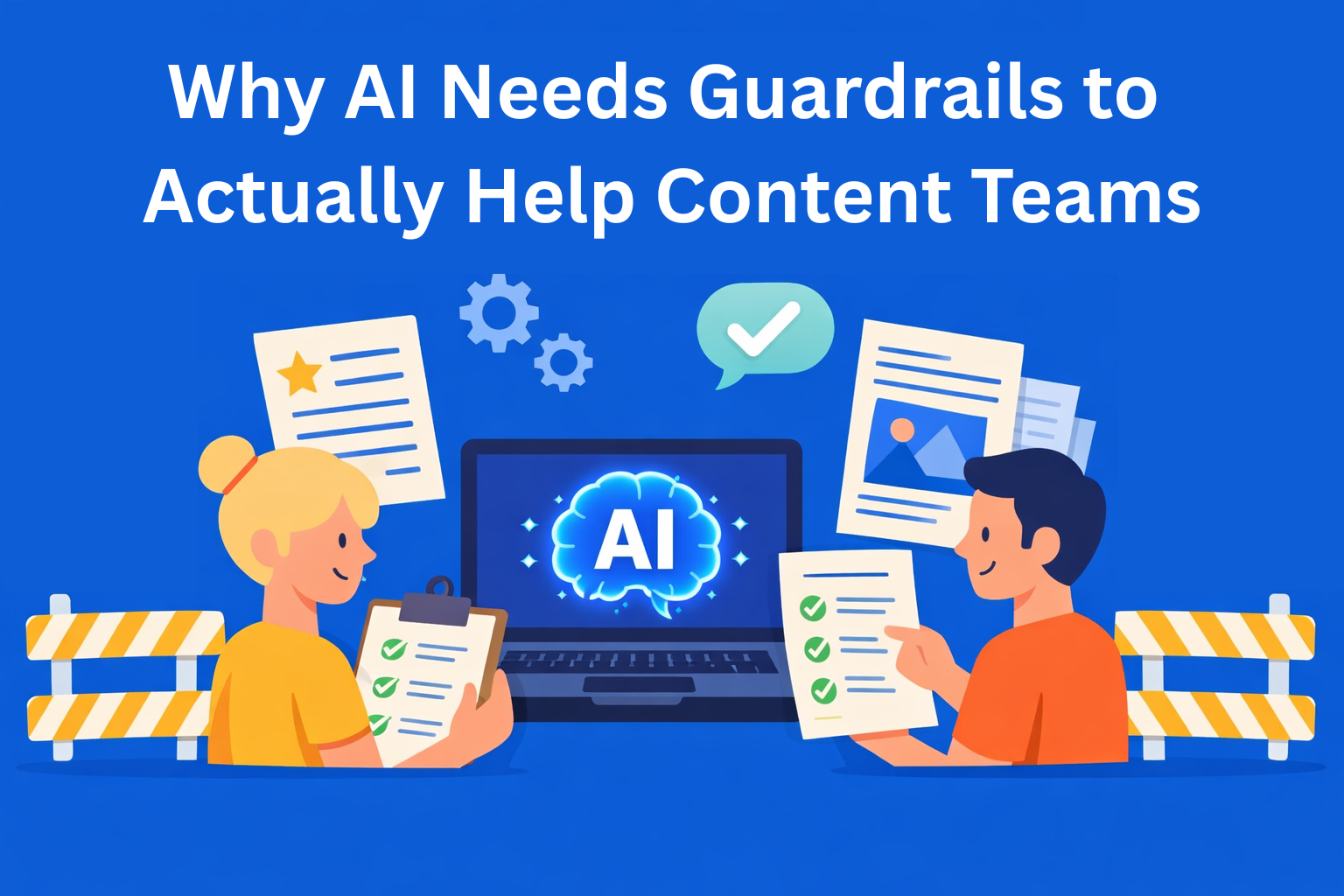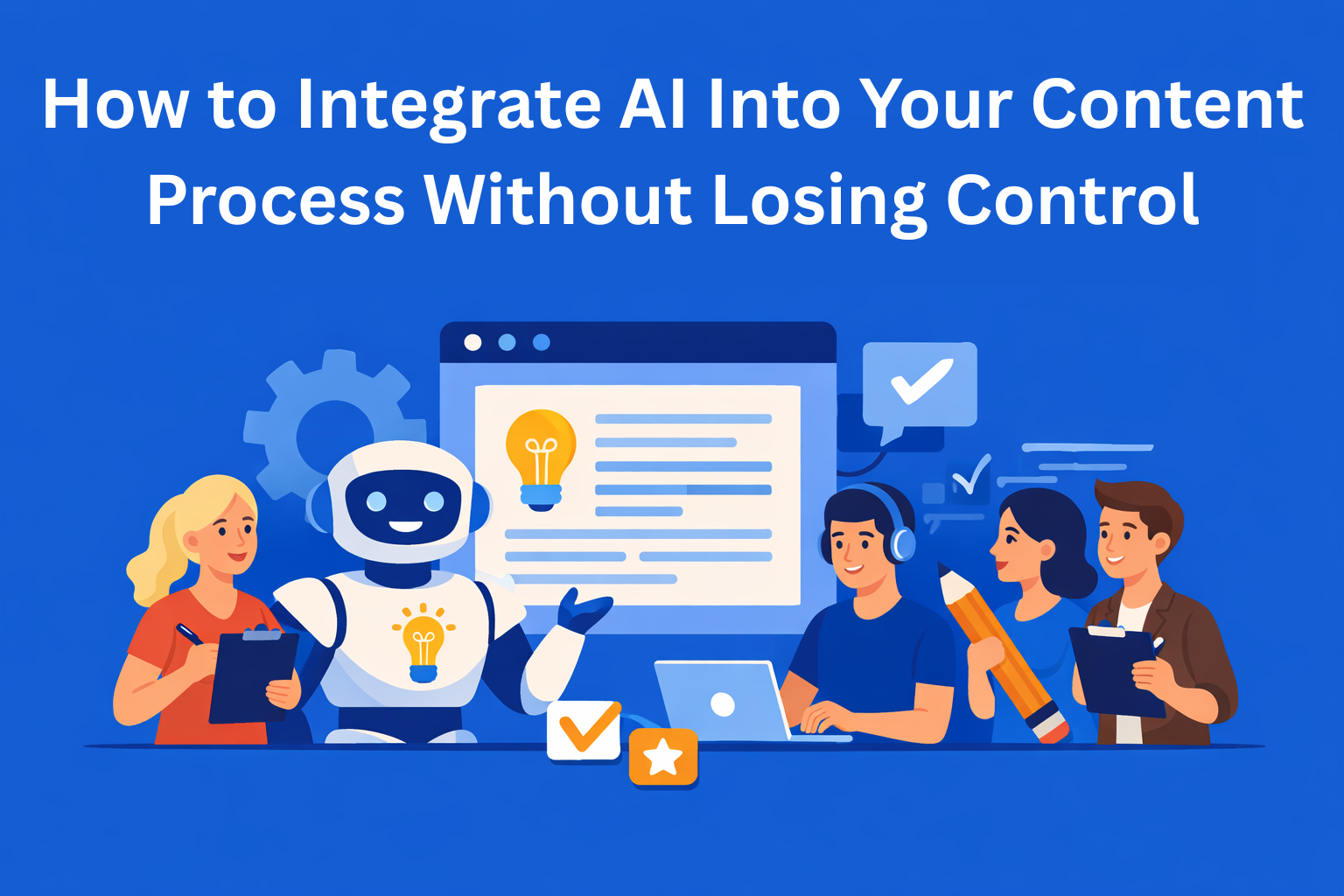Prompts to Write Engaging Product Descriptions with AI
Struggling with product descriptions? Learn how to use AI prompts to quickly create engaging, brand-friendly copy that actually sells, without sounding robotic. Perfect for e-commerce, SaaS, fashion, and more.

Good product descriptions aren’t just some extra text in your online shop - they’re literally the bridge between your product and your customer. But writing hundreds of descriptions can get pretty boring, especially when they need to be interesting, informative, and match your brand’s tone. That’s exactly when AI becomes helpful. If you use it wisely, you can get efficient and persuasive texts without turning into a robot yourself.
In this blog, I’ll give you some useful AI prompt examples for writing engaging product descriptions. If you’re using tools like ChatGPT, Jasper, Copy.ai, or similar, and haven’t tried them for this yet (which I highly doubt), you definitely will after this.
Key Takeaways
- Good descriptions do more than inform - They connect features to benefits and emotions, aligning with brand tone and customer needs.
- AI saves serious time - From generating first drafts to producing multiple variations, AI accelerates the process, especially at scale.
- Detailed prompts = better output - Always specify audience, tone, key features, and style to help AI create content that fits your brand.
- Category-specific prompts work best - Whether it’s fashion, tech, or SaaS, tailor the prompt to your product’s world and emotional appeal.
- Go beyond “just the facts” - Use storytelling, multiple tones, and even user perspectives to make AI-generated content feel truly human.
What actually makes a good product description?
Before we jump into prompts, let’s first clear up what a good product description should actually do:
- Explain clearly and simply what the product is and what it’s for - but in an interesting way, not using dry technical language.
- Show why the product is useful and how it can improve or simplify the customer’s life, rather than just listing its features.
- Use a style and tone that matches the brand - whether that’s casual, luxurious, relaxed, or serious.
- And whenever possible, include a small story or emotion that helps the customer connect with the product.
In other words, a good description sells, but doesn’t sound like a sales pitch. That’s exactly what AI can help you achieve - if you give it the right prompt.
Why use AI to write product descriptions?
Because:
- It saves you tons of time - instead of spending 20 minutes on one description, AI can do it in a few seconds.
- You can easily switch up the writing style, so the text can sound serious, fun, or premium, depending on what you need.
- AI can generate multiple versions of the same description, so you can test which one works better with your audience.
- If you have hundreds of products, AI lets you quickly write descriptions for all of them, instead of doing it manually for days.
Of course, remember that AI isn’t an all-knowing copywriter - so it’s important to know how to give it the right prompt.
How to write a good AI prompt?
AI is only as good as your input. Here are the basic things you should include:
- Who is the target audience? (e.g. teenage girls, business professionals, moms...)
- What’s the tone and style? (professional, fun, luxurious...)
- What info must it include? (features, benefits, emotions)
Example: “Write a short and inspiring description for a girls’ sports bag aimed at teens, with a fun and modern tone. Include benefits like being waterproof and having multiple compartments.”
Prompts by product category
1. Fashion and clothing
For fashion, you need a bit of style and storytelling:
✅ “Write a stylish description for an evening dress made for an Instagram campaign, with a glamorous and confident tone. Highlight the cut and the feeling of self-confidence it gives.”
2. Gadgets and tech
Here, focus the AI on benefits, not just numbers:
✅ “Write a technical but user-friendly description for a smartwatch designed for athletes. Emphasize features like heart rate tracking, step count, and GPS, with a tone that motivates action.”
3. Lifestyle and home products
Here, it’s all about story and emotion:
✅ “Write a relaxed and warm description for a handmade candle with a lavender and lemon scent. Make them feel like they're in a summer garden.”
4. B2B and SaaS
Be clear and show value directly:
✅ “Write a professional description for a team collaboration software. Focus on saving time, integration with other tools, and remote work features. Keep the tone business casual.”
5. Toys and children’s products
Here, play with imagination and curiosity:
✅ “Write a fun and colorful description for an educational toy for kids aged 3 to 6. Use words like ‘discover’, ‘explore’, and ‘learn through play’, with a tone that excites both parents and kids.”
6. Beauty and cosmetics
Here, use sensual words and feelings:
✅ “Write a description for a luxury face serum. Use a gentle and elegant tone, highlight the glow and hydration effects, and include the feeling of a daily self-care ritual.”
Of course, these are just sample prompts. Feel free to adjust them to your own needs.
Advanced AI tactics for better descriptions
If you want to take things a step further, try giving prompts like:
- User perspective: “Imagine you’re a customer who just bought this product. How would you describe the experience?”
- Include storytelling: “Add a short, two-sentence story about how this product improves everyday life.”
- Multiple versions: “Write three versions of the same product description - one formal, one creative, one humorous.”
A few important final tips
AI is great, but always check if the text sounds natural. Add SEO keywords where they fit nicely, and don’t write descriptions that sound cold or robotic - add something personal, a word or tone that feels like your brand.
The best AI-generated product descriptions are the ones no one can tell were written by a machine.
Conclusion
Writing product descriptions with AI can be way easier than you think. Instead of spending hours trying to figure out how to describe a product, AI can do it for you - quickly and simply. In the end, you still decide what you’ll use, but you’ll have a solid starting point and often a nearly complete description that just needs a little editing.






